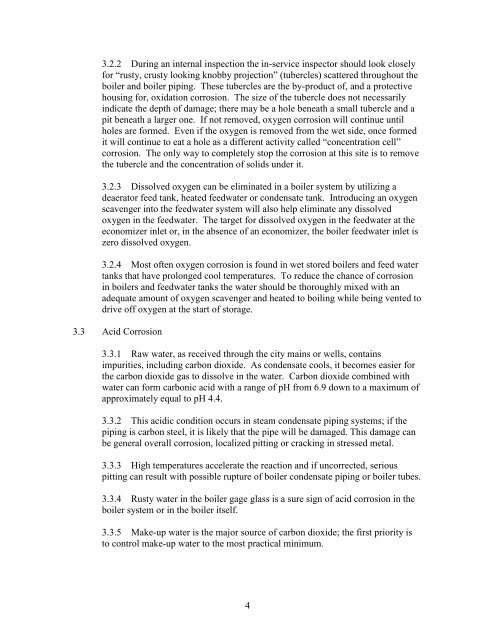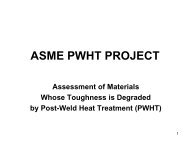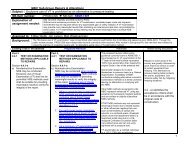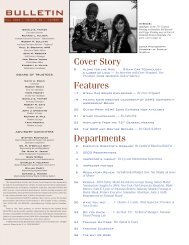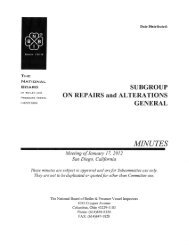DRAFT BOILER/FEEDWATER GUIDELINES - The National Board of ...
DRAFT BOILER/FEEDWATER GUIDELINES - The National Board of ...
DRAFT BOILER/FEEDWATER GUIDELINES - The National Board of ...
Create successful ePaper yourself
Turn your PDF publications into a flip-book with our unique Google optimized e-Paper software.
3.2.2 During an internal inspection the in-service inspector should look closely<br />
for “rusty, crusty looking knobby projection” (tubercles) scattered throughout the<br />
boiler and boiler piping. <strong>The</strong>se tubercles are the by-product <strong>of</strong>, and a protective<br />
housing for, oxidation corrosion. <strong>The</strong> size <strong>of</strong> the tubercle does not necessarily<br />
indicate the depth <strong>of</strong> damage; there may be a hole beneath a small tubercle and a<br />
pit beneath a larger one. If not removed, oxygen corrosion will continue until<br />
holes are formed. Even if the oxygen is removed from the wet side, once formed<br />
it will continue to eat a hole as a different activity called “concentration cell”<br />
corrosion. <strong>The</strong> only way to completely stop the corrosion at this site is to remove<br />
the tubercle and the concentration <strong>of</strong> solids under it.<br />
3.2.3 Dissolved oxygen can be eliminated in a boiler system by utilizing a<br />
deaerator feed tank, heated feedwater or condensate tank. Introducing an oxygen<br />
scavenger into the feedwater system will also help eliminate any dissolved<br />
oxygen in the feedwater. <strong>The</strong> target for dissolved oxygen in the feedwater at the<br />
economizer inlet or, in the absence <strong>of</strong> an economizer, the boiler feedwater inlet is<br />
zero dissolved oxygen.<br />
3.2.4 Most <strong>of</strong>ten oxygen corrosion is found in wet stored boilers and feed water<br />
tanks that have prolonged cool temperatures. To reduce the chance <strong>of</strong> corrosion<br />
in boilers and feedwater tanks the water should be thoroughly mixed with an<br />
adequate amount <strong>of</strong> oxygen scavenger and heated to boiling while being vented to<br />
drive <strong>of</strong>f oxygen at the start <strong>of</strong> storage.<br />
3.3 Acid Corrosion<br />
3.3.1 Raw water, as received through the city mains or wells, contains<br />
impurities, including carbon dioxide. As condensate cools, it becomes easier for<br />
the carbon dioxide gas to dissolve in the water. Carbon dioxide combined with<br />
water can form carbonic acid with a range <strong>of</strong> pH from 6.9 down to a maximum <strong>of</strong><br />
approximately equal to pH 4.4.<br />
3.3.2 This acidic condition occurs in steam condensate piping systems; if the<br />
piping is carbon steel, it is likely that the pipe will be damaged. This damage can<br />
be general overall corrosion, localized pitting or cracking in stressed metal.<br />
3.3.3 High temperatures accelerate the reaction and if uncorrected, serious<br />
pitting can result with possible rupture <strong>of</strong> boiler condensate piping or boiler tubes.<br />
3.3.4 Rusty water in the boiler gage glass is a sure sign <strong>of</strong> acid corrosion in the<br />
boiler system or in the boiler itself.<br />
3.3.5 Make-up water is the major source <strong>of</strong> carbon dioxide; the first priority is<br />
to control make-up water to the most practical minimum.<br />
4


